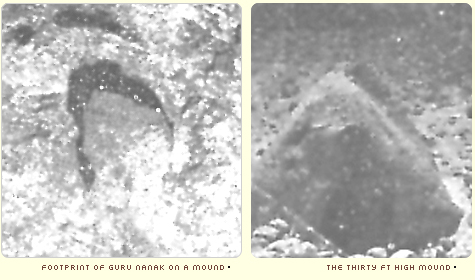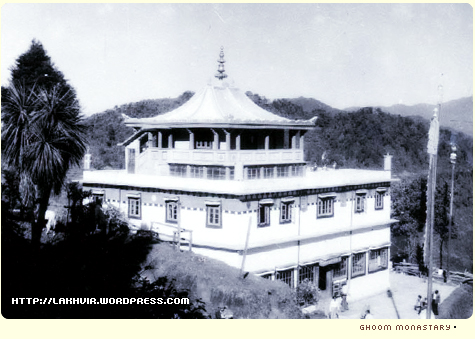Respected Namjap ji,
You are right, Guru Nanak sahib ji is well accepted by Tibetians as this write would show.
An article by
Preet Mohan Singh Ahluwalia
The following travel account of Sardar Surinder Singh was published in the Sikh Review, Feb-Mar 1970.
Travels of Sardar Surinder Singh
Guru Nanak was the most widely traveled Prophet. He not only covered the length and breadth of the Indian sub-continent but also visited the Middle East, the seat of the Muslim religion, as well as Tibet the seat of Buddhism during the 15th century. Definite historical evidence of the Guru’s visit to Tibet is not available, but this tradition is being passed on from generation to generation, despite the difficulties and hazards of the journey that existed in those times. This persistent tradition has gained strong support from the revelations made from Tibetan lamas coming into India in the recent years.
The Dalai Lama, spiritual leader of Buddhists in Tibet, has confirmed it in his discussions with some Sikh leaders and that Tibetans revere Guru Nanak as a Buddhist saint under the name of Guru Gompka Maharaj.
An Indian official who went in late 1950s with our trade mission to Lhasa has brought with him a painting drawn on silk from a Buddhist monastery stated to be of Guru Nanak. The portrait was in the typical dress of the Tibetan saints. During my two years stay in North Bengal and Sikkim, I visited a large number of monasteries and, on making enquiries, I found quite a few lamas mentioning Guru Nanak as a saint of theirs who had gone to Tibet from India.
At a place called Ghoom, a few miles from Darjeeling, there is a Tibetan monastery where a large tanka (a painting on cloth which can be rolled up like a map) is said to be that of Guru Nanak. These facts tend to confirm the belief that Guru Nanak visited Tibet, but differences of opinion exist over the route taken by him.
One view is that his route lay through Ladakh, which was even then a Buddhist center, linked with Lhasa (capital of Tibet). The other is that Guru Nanak took a route passing through Sikkim. There is evidence in the Sikh scriptures that Guru Nanak went to kamrup (Assam). Either the state of Kamrup then included modern Sikkim or after visiting the Kamrup area Guru Nanak went on to Tibet through Sikkim.
Sikkim has two main routes through which trade between India and China has been carried down the ages, viz., Natu-la Nathang route and the Donkhyla Nonkung Passes. It was at Gangtok that a civilian contractor told me of the existence of a Gurdwara in North Sikkim in memory of Guru Nanak. I had been planning to visit North Sikkim for its scenic beauty, but the reported presence of a Gurdwara there made me too eager to carry out the plan. My two attempts to reach Chungtang did not materialize, as I could not cross Wong-slide, almost halfway, which was then very active due to the rainy season. It was on my third attempt, during winter, that I reached Chungtang, the place where Guru Nanak stayed on his way to Tibet.
Chungtang is about a 100 miles away from Gangtok and is in the interior of North Sikkim. The route which goes along Teesta river from Dikchu onward used to be a bridle path only, but a few years ago a metallic road called North Sikkim highway has been completed and now a trip to Chungtang is quite easy and comfortable. The valleys of North Sikkim are the most fertile in Sikkim, the people there are very healthy and charming and the scenic beauty is breadth catching with millions of orchids blossoming all around.
Half way at Singik one gets a most clear and enchanting view of Kanchangchunga. Chungtang is at a height of about 6500 feet above sea level. The small valley has Teesta River and Lachung Choo (a tributary of Tiesta) on the two sides; these separate the valley from densely forested hills. The smaller hills on its northwest lead to Lachung Lachen valleys and Donkhyla-Nonkung Passes entering into Tibet.
Certain maps published by Government of India show a shrine and police post in Chungtang. There are only a few houses in Chuntang. The major features are the shrine of Guru Nanak and the Sikkim police post. Local people also call the place Nanak-Tang. Due to the pucca (metallic) road having been laid, the area is now fast developing into a prosperous village with amenities like a school, dispensary, etc., coming up.

In the middle of the small valley there is a single hard stone mound, 30 feet high and about 200 feet in circumference. The village people have risen a feet high stonewall around it to maintain the sanctity of the place. The stone mound has a cave inside, whose mouth has been walled up with stones. On the top of the mound, there are a few depressions. They are believed to be the footprints of Guru Nanak and the local people still pay homage to these marks. I saw some small coins offered at the spot on the top marked by a stone, about 2 cubic feet, although there was no priest as such for the shrine.
On the side of the mound there are crevices a few feet about the ground level through which water was trickling. The crevices were a few inches deep, suggesting that the water has been coming out of these for the past few centuries.
The story that has come down from generations, as told by the local people is that, Guru Nanak on his way to Tibet stayed here in the cave under the mound and, as the water in the river was very muddy due to the rains, he produced water from the side of the mound and since then the water keeps on coming out of the ribs of the mound. During the passage of time, earth has come down from the hills dues to rains and landslides, and has covered up the side of the mound to a sizeable extent and hence the cave, which is otherwise quite large, has been walled up.
Tibetans who come there tie their religious hymns with strings taken across the mound by tall bamboos. It is a belief among Tibetans that the individual doing so gets recitation of these hymns credited to his account the number of times the cloth carrying the hymns flutters in the breeze. These are also stated to be efficacious warding off of evil spirits.
At about 20 places on the mound wild white orchids were blossoming. When I tried to pick up a small bunch of orchids, some of the local people immediately stopped me, indicating that this being a temple I could not remove these orchids. I explained to them that this was as much a temple of mine as theirs and I wanted to take away a few orchids with me as a symbol of the Guru’s blessings and grace. They were not at first convinced by my argument, but then an old man, pointing to my beard and turban, told them in their language that I was a follower of Guru Nanak and might be allowed to carry these orchids with me.
I stayed there till evening. The sun was slowly coming to its journey’s end and its orange rays filtered through the trees on the hilltop. The day’s warmth was still lingering in the breeze. The mild flutter of the hymns and the gushing waters of the river made a soft music for the ears. There was an aroma of serenity and ethereal bliss around the place in which I almost lost myself.
As the shadows lengthened and deepened, I moved from the place with a strange elation, which dwelt in my heart for days together. Even now when my thoughts take me back to Nanak-tang, the same strange feeling of elation grips me and urges me to go there again.
Whenever I have spoken about my visit to Chungtang, I have found that most members of my community and other admirers of Guru Nanak are not aware of it. I have, therefore, given the above account so that the lovers and devotees of Guru Nanak may make a pilgrimage to Nanak-tang where there is in the atmosphere a power of prayer that goes to your heart without your moving your lips and you drink deep of the bliss of peace that Guru Nanak had left in the place. Those with resources and the custodians of our faith may raise there a suitable shrine to the glory of Guru Nanak and for the benefit of pilgrims.
Source:
Guru Nanak in Tibet - Part II « The Inner Journey



